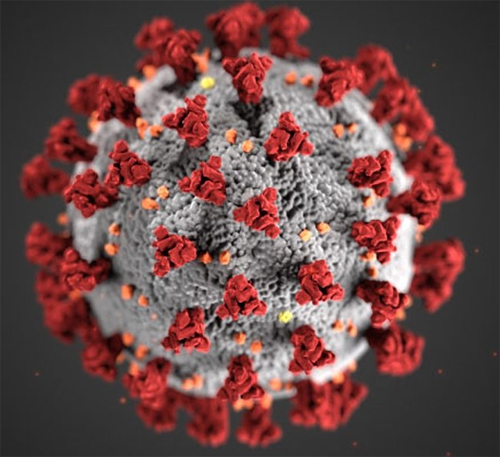 Thousands of processors stacked over six feet high are networked together into the fastest computer in the world. Powerful X-rays produced by accelerating electrons to near the speed of light. Computer software that can model the complex spread of diseases. These are just some of the tools that we here at the Department of Energy (DOE) are using to tackle the COVID-19 disease outbreak, widely referred to as the coronavirus.
Thousands of processors stacked over six feet high are networked together into the fastest computer in the world. Powerful X-rays produced by accelerating electrons to near the speed of light. Computer software that can model the complex spread of diseases. These are just some of the tools that we here at the Department of Energy (DOE) are using to tackle the COVID-19 disease outbreak, widely referred to as the coronavirus.
To harness our scientific capabilities, the DOE has recently launched a task force that will coordinate the resources to study coronavirus and other public health issues that are available at the 17 DOE national laboratories.
DOE has a vital role to play in the national response to COVID-19. Researchers have already used tools at our national laboratories to make major inroads to analyzing the virus and its spread.
Scientists have used Summit – the most powerful supercomputer in the world and part of a DOE Office of Science user facility – to examine more than 700,000 viral genomes. They have also simulated more than 8,000 different compounds. As a result, they have identified 77 drug compounds with the potential to keep the virus from infecting a person. While a normal computer would have taken months to do this analysis, it only took Summit a few days.
With the X-rays at the Advanced Photon Source, another DOE Office of Science user facility, scientists have created a 3D map of a protein of the virus that medicines may be able to target. Researchers revealed this protein is essential to the virus being able to replicate in a host. It’s also extremely similar to a protein from the earlier SARS-CoV outbreak. As a result, scientists think that drugs that companies have been developing to treat SARS may also be useful for inhibiting the virus behind COVID-19. Currently, these scientists are mapping the structure of several other proteins in the COVID-19 virus to see if drugs could target them.
Predicting how the virus will spread can help public health officials identify where to target their efforts. The DOE’s Lawrence Livermore National Laboratory and Los Alamos National Laboratory are using computer models to map the potential spread of the disease. By using supercomputers to simulate virtual people, they can forecast the spread more accurately than previous models. Last year, Los Alamos actually won the FluSight Challenge competition run by the Centers for Disease Control and Prevention by creating models with the most accurate description of how the common influenza spreads.
Other resources at the DOE’s national laboratories include genomic analysis, models of viral evolution, and powerful microscopes.
While the DOE itself does not fund medical or clinical work, our facilities complement the efforts of the National Institutes of Health, the Department of Defense, and other federal partners in understanding the basic phenomena underlying the outbreak. We want to ensure the scientists confronting this disease have comprehensive access to both our tools and our subject matter expertise. We encourage scientists to submit their ideas for using DOE tools to research COVID-19. Together, we will tackle this public health emergency.
Dr. Chris Fall, Director, Office of Science, U.S. Department of Energy
The Office of Science is the single largest supporter of basic research in the physical sciences in the United States and is working to address some of the most pressing challenges of our time. For more information, please visit https://energy.gov/science.
